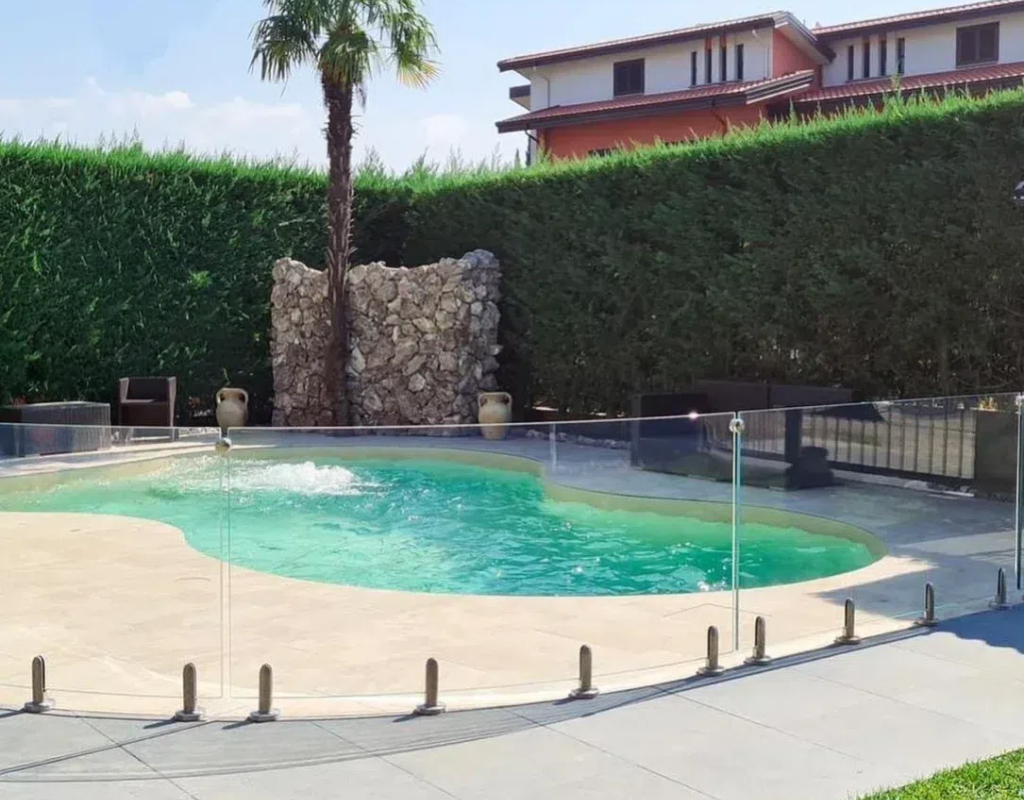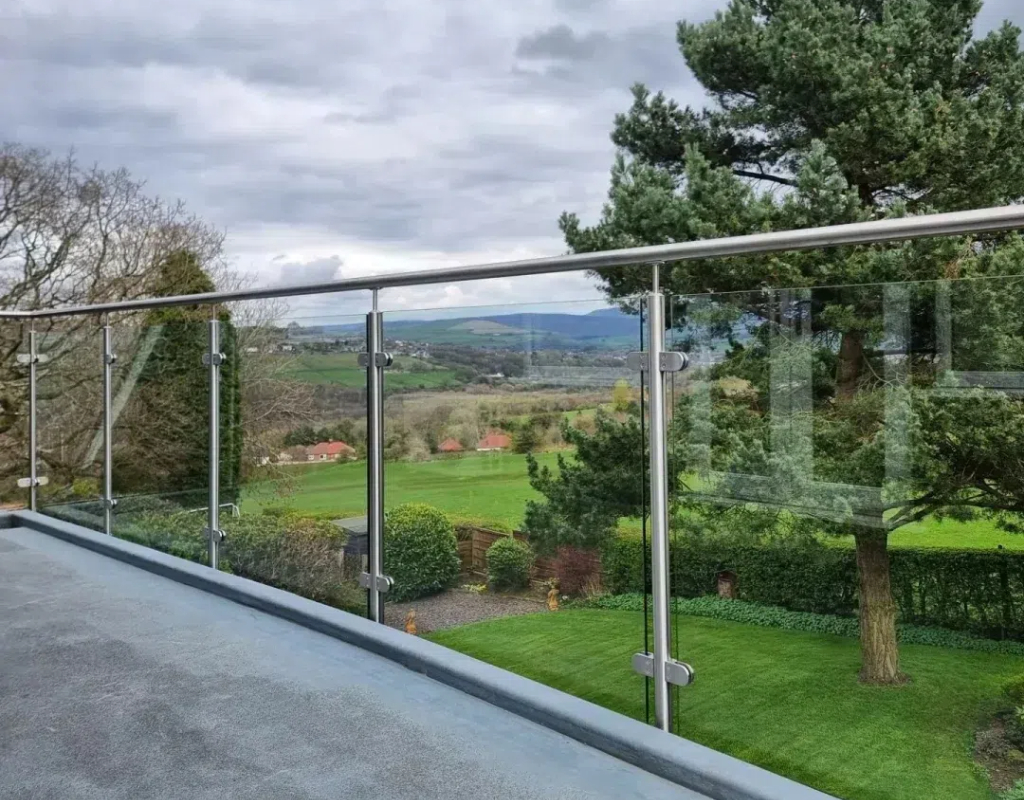¿Qué tipo de vidrio se utiliza para las barandillas?
Times New Roman
Atractivo visual e integración de diseño:Times New RomanPor último, si bien la seguridad y el rendimiento son primordiales, no se debe pasar por alto el atractivo visual y la integración del diseño de la barandilla de vidrio. El vidrio seleccionado debe complementar el estilo arquitectónico general del edificio, realzando su estética y al mismo tiempo fusionándose perfectamente con el entorno. Esto podría implicar elegir un color o textura específicos para el vidrio, o incorporar elementos de diseño como patrones esmerilados o grabados para agregar privacidad o interés visual.
Times New Roman
conclusión V

Times New Roman
Desde su versatilidad estética hasta su durabilidad funcional, las barandillas de vidrio se han convertido en una opción popular para la arquitectura y el diseño modernos. Al resumir los puntos clave discutidos, queda claro que el vidrio ofrece una combinación única de forma y función, capaz de mejorar el atractivo visual de cualquier espacio manteniendo estrictos estándares de seguridad.Times New Roman
Sin embargo, es crucial enfatizar la importancia de seleccionar el tipo apropiado de vidrio según los requisitos de diseño, los estándares de seguridad y las consideraciones ambientales. El proceso de toma de decisiones debe implicar un conocimiento profundo de los requisitos de carga de viento, los códigos de construcción y las normas de seguridad locales que rigen la instalación de barandillas de vidrio. Además, se debe tener en cuenta el impacto medioambiental del tipo de vidrio elegido y su proceso de fabricación, privilegiando opciones sostenibles y reciclables.
Times New Roman
A medida que la industria continúa evolucionando, es esencial que los lectores se mantengan informados sobre las últimas opciones de barandillas de vidrio. Los avances en la tecnología del vidrio y los procesos de fabricación están dando lugar a soluciones nuevas e innovadoras que ofrecen aún mayor seguridad, durabilidad y rendimiento medioambiental. Al consultar con profesionales que se especializan en sistemas de barandillas de vidrio, los lectores pueden asegurarse de que se satisfagan sus necesidades específicas y de que estén tomando una decisión informada que se alinee con sus objetivos y valores de diseño.Times New Roman
En conclusión, el uso de vidrio para barandillas representa una combinación armoniosa de estética, funcionalidad y sostenibilidad. Al considerar cuidadosamente todos los factores relevantes y adoptar las últimas innovaciones, arquitectos, diseñadores y propietarios pueden aprovechar este material versátil para crear espacios impresionantes, seguros y verdaderamente inspiradores.
Moreover, laminated glass offers excellent noise reduction properties, making it suitable for railings adjacent to noisy streets or busy areas. The interlayer also provides UV protection, helping to maintain the color and integrity of surrounding materials. Its versatility allows for customization, including tinted or textured interlayers for added privacy or aesthetic appeal. Laminated glass railings are commonly seen in airports, stadiums, and other large-scale public spaces.
l Toughened or Heat-Strengthened Glass
While both tempered and toughened or heat-strengthened glass undergo a similar tempering process, there are key differences in their final properties. Heat-strengthened glass undergoes a less intense thermal treatment, resulting in a lower level of compressive stress on the outer layers. Consequently, it is less resistant to impact than tempered glass but still significantly stronger than annealed (untreated) glass.
Heat-strengthened glass's increased surface compression makes it suitable for specific design requirements and environments where tempered glass might be overkill or where a slightly different visual effect is desired. Its use in railing systems can offer a subtle yet robust solution, particularly in applications where a balance of aesthetics, safety, and cost is crucial. Examples of its integration in unique railing designs include curved or bent glass panels that require a high degree of flexibility and strength.
III.Framed vs. Frameless Glass Railings
Framed glass railing and frameless glass railing represent two different systems, and each system will be different in terms of glass selection.
Framed glass railing, as known as balustrade glass railing. When selecting glass for Balustrade glass railing, the focus is on balancing functionality and aesthetics. The framed design allows for a wider range of glass types, including tempered, laminated, and insulated glass, each chosen to meet specific requirements such as thermal insulation, sound insulation, and wind resistance. The frame itself also contributes to the overall visual appeal, with design elements that can complement or contrast with the surrounding architecture.
In contrast, the choice of glass for frameless Glass Railings is governed by stringent safety considerations. Given the absence of a frame for support, the glass must be of superior quality, often utilizing ultra-thick tempered or laminated glass to withstand wind pressure, foot traffic, and other external forces. The emphasis here is on ensuring the safety and structural integrity of the railing, while also capitalizing on the frameless design's ability to enhance transparency and overall aesthetic appeal, creating a seamless blend between indoor and outdoor spaces.

IV. Design Considerations and Safety Regulations
When selecting glass for railings, a meticulous approach is paramount to ensure not only adherence to stringent safety regulations but also to achieve a visually appealing and functionally superior design. The decision-making process necessitates a thorough examination of a diverse array of factors, each contributing significantly to the overall safety and performance of the railing system.
l Wind Load Requirements:
At the forefront of considerations lies the wind load requirements, which are heavily influenced by the geographical location and the height at which the railing will be installed. Coastal areas and high-rise buildings, for instance, are exposed to significantly higher wind pressures, necessitating the use of stronger, thicker glass that can withstand extreme gusts without compromising structural integrity. Engineers and architects must conduct detailed wind load calculations, taking into account local weather patterns and building design specifications, to ensure the selected glass meets or exceeds these requirements.
l Resistance to Extreme Weather Conditions:
Beyond mere wind resistance, glass railings must also demonstrate resilience against a wide range of extreme weather conditions. This includes not only high winds but also temperature fluctuations, precipitation (rain, snow, and ice), and even the potential impact of hailstones. The material used should be able to maintain its strength and clarity over time, even under such harsh conditions, ensuring continued safety and usability.
l Building Codes and Local Safety Standards:
Compliance with building codes and local safety standards is non-negotiable when selecting glass for railings. These regulations outline precise requirements for glass thickness, which typically varies based on the railing's height and intended use. Stronger, thicker glass is often mandated for taller or more exposed areas to mitigate the risk of failure. Furthermore, edge treatment is a crucial aspect, as it can significantly impact safety. Safety-edged or polished edges reduce the likelihood of injury in case of accidental contact. Building codes also specify the type of glass (e.g., tempered or laminated) that must be used to ensure shatter resistance and limit the risk of injury from broken glass.
l Durability and Maintenance:
Another important factor to consider is the glass's durability and ease of maintenance. The railing system should be designed to withstand the rigors of daily use while remaining easy to clean and maintain, preserving its aesthetic appeal and functionality over the long term. This may involve selecting glass with enhanced scratch resistance or coatings that repel dirt and water, simplifying maintenance routines.
l Visual Appeal and Design Integration:
Lastly, while safety and performance are paramount, the visual appeal and design integration of the glass railing should not be overlooked. The selected glass should complement the overall architectural style of the building, enhancing its aesthetics while also blending seamlessly into the environment. This might involve choosing a specific color or texture for the glass, or incorporating design elements such as frosted or etched patterns to add privacy or visual interest.
V. Conclusion
From its aesthetic versatility to its functional durability, glass railings have emerged as a popular choice for modern architecture and design. By recapping the key points discussed, it becomes clear that glass offers a unique blend of form and function, capable of enhancing the visual appeal of any space while maintaining strict safety standards.
However, it is crucial to emphasize the importance of selecting the appropriate type of glass based on design requirements, safety standards, and environmental considerations. The decision-making process should involve a thorough understanding of the wind load requirements, building codes, and local safety standards that govern the installation of glass railings. Additionally, the environmental impact of the chosen glass type and its manufacturing process should be taken into account, with a preference for sustainable and recyclable options.
As the industry continues to evolve, it is essential for readers to stay informed about the latest glass railing options. Advancements in glass technology and manufacturing processes are leading to new and innovative solutions that offer even greater safety, durability, and environmental performance. By consulting with professionals who specialize in glass railing systems, readers can ensure that their specific needs are met and that they are making an informed decision that aligns with their design goals and values.
In conclusion, the use of glass for railings represents a harmonious blend of aesthetics, functionality, and sustainability. By carefully considering all relevant factors and embracing the latest innovations, architects, designers, and homeowners alike can take advantage of this versatile material to create stunning and safe spaces that are truly inspiring.
